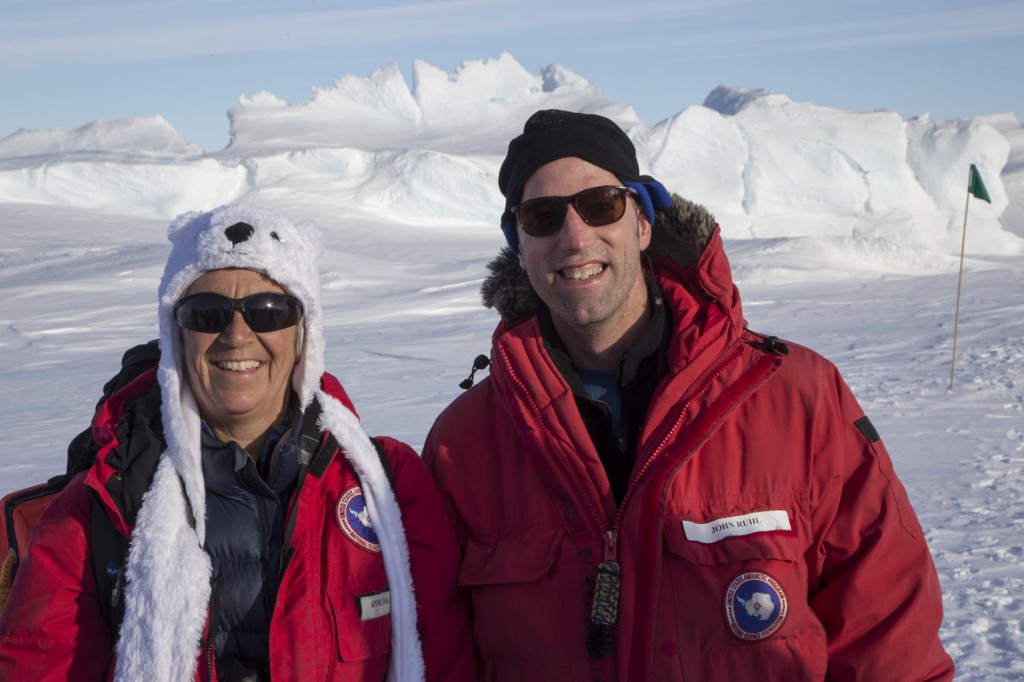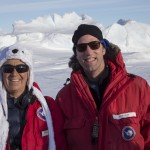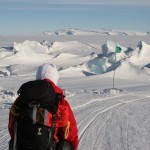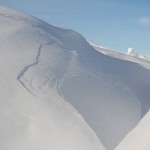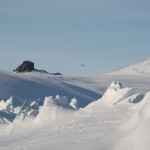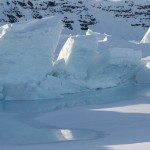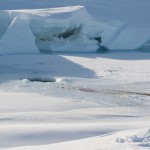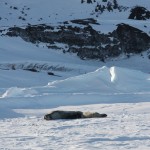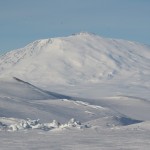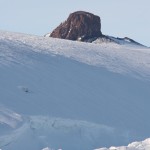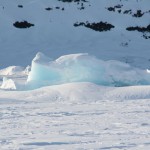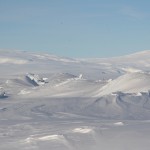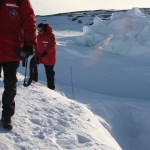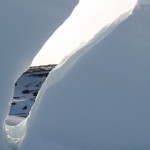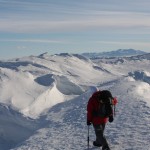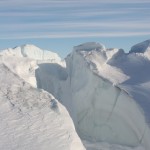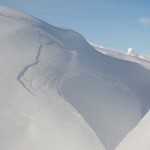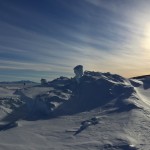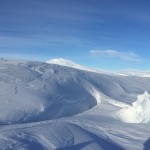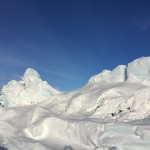Last night I was lucky enough to go on a tour of the “pressure ridges” near New Zealand’s Scott Base. These are “waves” in the ice shelf and the annual sea ice where they are being pushed up against Ross Island; the ice buckles in places, making a wonderful place to hike. Of course, you have to be careful not to fall into a crack… so we are only allowed out there in guided tour groups. Our guide was Anne Dal Vera (also known around here as “LDB Anne”, since she works with us out at the LDB site), who knows her way around ice. After all, she was a member of the “Antarctic Women’s Expedition”, the first group of women to ski to the South Pole. They arrived in January of 1993… and coincidentally, I was at the South Pole working on my PhD thesis project then, so I had already met Anne! Here’s a picture of the two of us, last night, on the pressure ridge tour.
We started the tour by gathering outside the McMurdo galley, where 10 of us (plus Anne) piled into a van for the short drive over to Scott Base. The Kiwi’s put out the flagged trail through the pressure ridges and maintain it, so we go there as their guests. (Thanks, New Zealand!)
From a high hill on the road over to their base, Anne explained how the pressure ridges form, and pointed out the line that separates the annual ices (which breaks up and flows out to sea every year, and is about 5-10 feet deep) and the ice shelf (which is 60-100 feet deep). LDB and the William’s Air field (aka “Willy”) are both on the ice shelf.
We parked in front of Scott base, radioed back to “Mac Ops” that we were about to head out for our hike, and stepped out over the “tidal crack” that forms between the “fast ice” (which “sticks fast” to the shore) and the sea ice (which rides up and down on the tide) onto the annual ice. From there we walked a flagged route through a fantastic scenery of broken, pushed-up ice sculptures, out to the “pressure ridge waves”.
Along the way, we passed a seal “access” hole, which they use to come up for air and to rest. They can apparently stay underwater for around 45 minutes at a time, and range a mile away from the hole while they hunt… somehow they can make a beeline for the hole, knowing right where it is, when they want to come up. We passed a few seals, including a mother and her month or two old pup, resting a little ways from the hole.
Here’s my photo gallery of this fantastic hike… enjoy!
